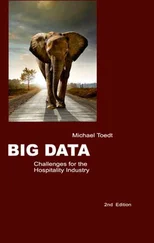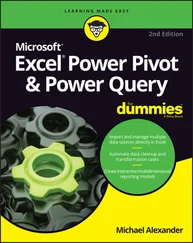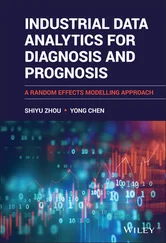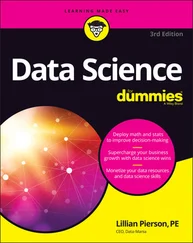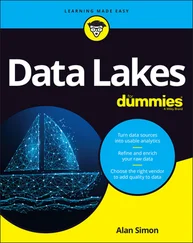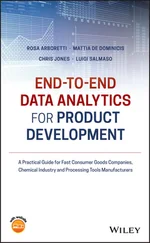4 Part 2: Fetching Blockchain Chain
Chapter 6: Parsing Blockchain Data and Building the Analysis Dataset
Comparing On-Chain and External Analysis Options
Integrating External Data
Identifying Features
Building an Analysis Dataset
Chapter 7: Building Basic Blockchain Analysis Models
Identifying Related Data
Making Predictions of Future Outcomes
Analyzing Time-Series Data
Chapter 8: Leveraging Advanced Blockchain Analysis Models
Identifying Participation Incentive Mechanisms
Managing Deployment and Maintenance Costs
Collaborating to Create Better Models
5 Part 3: Analyzing and Visualizing Blockchain Analysis Data
Chapter 9: Identifying Clustered and Related Data
Analyzing Data Clustering Using Popular Models
Implementing Blockchain Data Clustering Algorithms in Python
Discovering Association Rules in Data
Determining When to Use Clustering and Association Rules
Chapter 10: Classifying Blockchain Data
Analyzing Data Classification Using Popular Models
Implementing Blockchain Classification Algorithms in Python
Determining When Classification Fits Your Analytics Needs
Chapter 11: Predicting the Future with Regression
Analyzing Predictions and Relationships Using Popular Models
Implementing Regression Algorithms in Python
Determining When Regression Fits Your Analytics Needs
Chapter 12: Analyzing Blockchain Data over Time
Analyzing Time Series Data Using Popular Models
Implementing Time Series Algorithms in Python
Determining When Time Series Fits Your Analytics Needs
6 Part 4: Implementing Blockchain Analysis Models
Chapter 13: Writing Models from Scratch
Interacting with Blockchains
Connecting to a Blockchain
Examining Blockchain Client Languages and Approaches
Chapter 14: Calling on Existing Frameworks
Benefitting from Standardization
Focusing on Analytics, Not Utilities
Leveraging the Efforts of Others
Chapter 15: Using Third-Party Toolsets and Frameworks
Surveying Toolsets and Frameworks
Comparing Toolsets and Frameworks
Chapter 16: Putting It All Together
Assessing Your Analytics Needs
Choosing the Best Fit
Managing the Blockchain Project
7 Part 5: The Part of Tens
Chapter 17: Ten Tools for Developing Blockchain Analytics Models
Developing Analytics Models with Anaconda
Writing Code in Visual Studio Code
Prototyping Analytics Models with Jupyter
Developing Models in the R Language with RStudio
Interacting with Blockchain Data with web3.py
Extract Blockchain Data to a Database
Accessing Ethereum Networks at Scale with Infura
Analyzing Very Large Datasets in Python with Vaex
Examining Blockchain Data
Preserving Privacy in Blockchain Analytics with MADANA
Chapter 18: Ten Tips for Visualizing Data
Checking the Landscape around You
Leveraging the Community
Making Friends with Network Visualizations
Recognizing Subjectivity
Using Scale, Text, and the Information You Need
Considering Frequent Updates for Volatile Blockchain Data
Getting Ready for Big Data
Protecting Privacy
Telling Your Story
Challenging Yourself!
Chapter 19: Ten Uses for Blockchain Analytics
Accessing Public Financial Transaction Data
Connecting with the Internet of Things (IoT)
Ensuring Data and Document Authenticity
Controlling Secure Document Integrity
Tracking Supply Chain Items
Empowering Predictive Analytics
Analyzing Real-Time Data
Supercharging Business Strategy
Managing Data Sharing
Standardizing Collaboration Forms
8 Index
9 About the Author
10 Advertisement Page
11 Connect with Dummies
12 End User License Agreement
1 Chapter 2 TABLE 2-1 Differences in Blockchain Types TABLE 2-1 Differences in Blockchain Types Feature Public Private Hybrid Permission Permissionless Permissioned (limited to organization members) Permissioned (limited to consortium members) Consensus PoW, PoS, and so on Authorized participants Varies; can use any method Performance Slow (due to consensus) Fast (relatively) Generally fast Identity Virtually anonymous Validated identity Validated identity
TABLE 2-2 Business Requirements and Blockchain Features TABLE 2-2 Business Requirements and Blockchain Features Business Requirement Blockchain Feature Controlling and recording transactions Blockchain excels in transferring value in untrusted environments. Reducing or eliminating excessive cost By eliminating middlemen, blockchain can reduce overall, and incremental, transaction-processing costs. Pursuing efficiency Blockchain increases direct interaction among transaction participants and automates many steps in transactions, decreasing settlement time and reducing inefficient waiting time. Preserving artifacts for analysis Because existing blockchain data can't be changed, a historical transaction record is guaranteed. Protecting availability through redundancy Each node of the blockchain network maintains a copy of the blockchain, so the failure of any node has no effect on the overall network’s capability to access blockchain data. Exposing data without compromising privacy Blockchain technology promotes data transparency. Because all nodes maintain copies of the ledger, the data is available to any authorized user.
2 Chapter 5TABLE 5-1 Blockchain Analytics ToolsTABLE 5-2 Ethereum Blockchain Access Libraries
3 Chapter 6TABLE 6-1 Forms of Data Stored in a BlockchainTABLE 6-2 Sources of External Data
4 Chapter 7TABLE 7-1 Loan Default Data
5 Chapter 13TABLE 13-1 Pros and Cons of Popular Blockchain Client Languages
6 Chapter 15TABLE 15-1 Comparing Data Analytics Frameworks
1 Chapter 1FIGURE 1-1: Customer entities presented as a table.FIGURE 1-2: Linear regression model using hours practiced and audition scores d...
2 Chapter 3FIGURE 3-1: Viewing block header information in Etherscan.FIGURE 3-2: Listing transactions in a block in Etherscan.FIGURE 3-3: Examining a transaction in Etherscan.FIGURE 3-4: Exploring additional transaction details in Etherscan.FIGURE 3-5: Ethereum block header.FIGURE 3-6: Contents of an Ethereum transaction.FIGURE 3-7: Original format of input data.FIGURE 3-8: Decoded data for the cancelOrder()function.FIGURE 3-9: Ethereum events in Etherscan.
3 Chapter 4FIGURE 4-1: The Go Ethereum (Geth) Download web page.FIGURE 4-2: Installation Options window.FIGURE 4-3: Geth light node startup command.FIGURE 4-4: Geth runtime messages.FIGURE 4-5: The Ganache Download web page.FIGURE 4-6: Support Ganache Analytics window.FIGURE 4-7: Ganache Accounts window.FIGURE 4-8: Ganache Settings window’s Server tab.FIGURE 4-9: Truffle installation requirements.FIGURE 4-10: Error message in PowerShell when NodeJS isn’t installed.FIGURE 4-11: The NodeJS Download page.FIGURE 4-12: The NodeJS version message.FIGURE 4-13: Installing Truffle.FIGURE 4-14: Initializing a new Truffle project.FIGURE 4-15: The Microsoft Visual Studio Code download web page.FIGURE 4-16: Visual Studio Code install options window.FIGURE 4-17: The Visual Studio Code IDE desktop.FIGURE 4-18: The Visual Studio Code IDE with the Solidity extension.
4 Chapter 5FIGURE 5-1: Python version command.FIGURE 5-2: The Python Download web page.FIGURE 5-3: Python Setup window.FIGURE 5-4: The Anaconda Distribution download web page.FIGURE 5-5: The Anaconda Navigator desktop.FIGURE 5-6: The conda install pipcommand.FIGURE 5-7: The pip install web3command.FIGURE 5-8: Commands to create a new project directory.FIGURE 5-9: Visual Studio Code IDE with Python extension.FIGURE 5-10: The Remix web page.FIGURE 5-11: The Remix Solidity compiler page.FIGURE 5-12: Copying the SupplyChain.sol smart contract ABI in Remix.FIGURE 5-13: Copied ABI value in the SupplyChain.abifile.FIGURE 5-14: VS Code showSupplyChain.py.FIGURE 5-15: Connecting Remix to your Ganache blockchain.FIGURE 5-16: Copying a deployed contract's address.FIGURE 5-17: VS Code showSupplyChain.py(with contract address).FIGURE 5-18: VS Code after running showSupplyChain.pyfor the first time.FIGURE 5-19: Completed showSupplyChain.pyPython script.
Читать дальше

